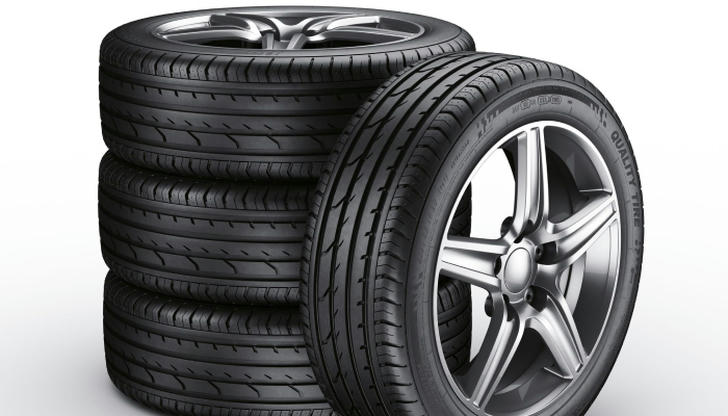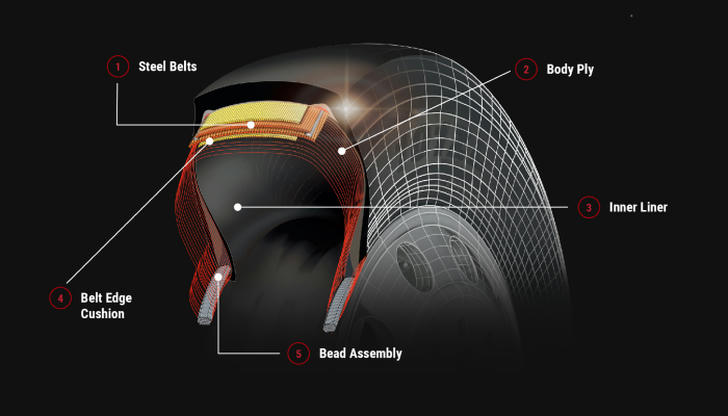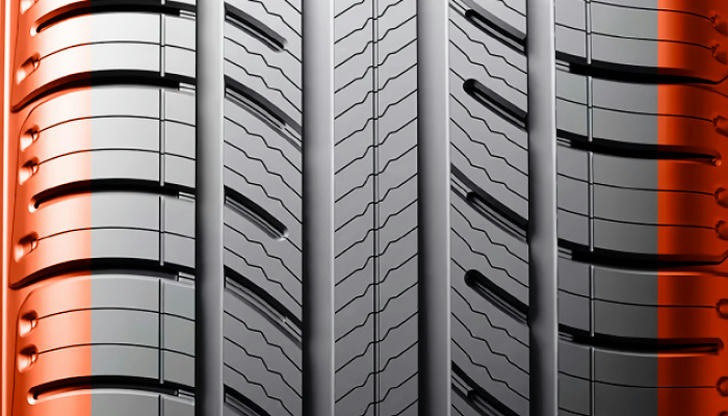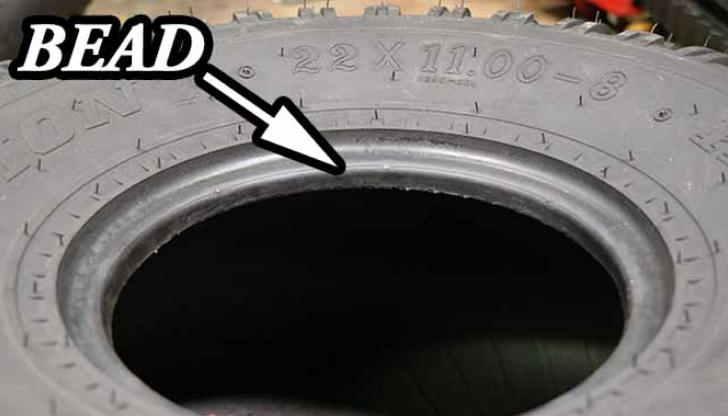Advances in Tire Construction, Materials, and Manufacturing Processes: Insights for Enhanced Performance and Optimal Design

The automotive sector, a pivotal driver of global economic growth, has witnessed unprecedented advancements in recent decades. These developments have been mirrored in the tire industry, where continuous research and technological innovations have transformed tire design, material composition, and manufacturing methodologies. Tires serve as the vital interface between vehicles and road surfaces, influencing safety, comfort, fuel efficiency, and overall vehicle performance. Therefore, understanding the intricacies of tire construction, raw materials, and production processes is crucial for achieving optimal tire designs that cater to diverse automotive needs.
Tire Construction: An Overview
Tires are complex assemblies comprising multiple layers and components, each serving specific functions to ensure overall tire performance. The primary structural components of a tire include the tread, shoulders, sidewalls, carcass, beads, and bead wires.
1.Tread The tread, the outermost layer in contact with the road, is pivotal for traction, braking, and steering responsiveness. It features a pattern of grooves and sipes designed to channel water away, enhance wet grip, and reduce noise. Advances in tread compounds and tread patterns have significantly improved tire durability and performance across various terrains and weather conditions.

2.Shoulders The shoulder area, located between the tread and sidewalls, provides additional support and stability, especially during cornering. It helps distribute lateral forces evenly, enhancing handling characteristics and reducing wear. Innovations in shoulder design, such as variable stiffness profiles, have contributed to improved tire handling and ride quality. 3.Sidewalls The sidewalls, connecting the tread and bead areas, play a critical role in tire flexibility and durability. They protect the internal tire structure from external impacts and contain information about tire size, pressure rating, and other specifications. Recent developments in sidewall materials and designs have focused on reducing rolling resistance and enhancing tire aesthetics. 4.Carcass The carcass, or body ply, forms the tire's structural backbone, supporting the vehicle's load and maintaining tire shape. It typically consists of layers of fabric or steel cords embedded in rubber. Modern carcass designs, employing radial plies and advanced materials, have significantly improved tire strength and ride comfort.

5.Beads and Bead Wires The beads, reinforced with bead wires, anchor the tire to the wheel rim. They ensure the tire remains securely mounted under all operating conditions. Advancements in bead design and material technology have contributed to better tire retention and reduced weight.
Raw Materials in Tire Manufacturing
The selection of raw materials is crucial in determining tire performance characteristics. Key materials include elastomers, reinforcing fibers, fillers, and processing aids. 1.Elastomers Natural and synthetic rubbers are the primary elastomers used in tire manufacturing. Natural rubber offers excellent elasticity and tear resistance, while synthetic rubbers, such as styrene-butadiene rubber (SBR) and polybutadiene rubber (BR), provide enhanced durability and heat resistance. Recent developments in rubber chemistry have led to the creation of specialty elastomers tailored for specific tire applications. 2.Reinforcing Fibers Reinforcing fibers, such as nylon, polyester, and aromatic polyamide (aramid), are embedded within the tire carcass and tread to provide strength and dimensional stability. These fibers are chosen based on their tensile strength, modulus, and resistance to fatigue and chemicals. 3.Fillers and Processing Aids Fillers, such as carbon black and silica, enhance tire stiffness, wear resistance, and UV stability. Processing aids, including plasticizers, antioxidants, and vulcanizing agents, facilitate tire manufacturing and improve final product quality. Innovations in filler technology, particularly the use of nano-sized particles, have led to significant improvements in tire performance and environmental footprint.
Manufacturing Processes
Tire manufacturing involves a series of complex and highly automated steps, including compounding, extrusion, calendaring, forming, and vulcanization. 1.Compounding In this stage, raw materials are mixed to form tire compounds. Precise control over the mixing process ensures uniform material properties and consistent tire performance. 2.Extrusion and Calendaring Extrusion forms the tire's various layers into continuous strips of precise dimensions. Calendaring further refines these strips, imparting the desired thickness and surface finish. 3.Forming The tire layers are assembled and shaped into the final tire form using various forming techniques, such as drum shaping or bladder expansion. This process aligns the tire components and prepares them for vulcanization. 4.Vulcanization Vulcanization, a chemical cross-linking process, transforms the tire components into a single, cohesive unit. This step is crucial for achieving the tire's final mechanical properties, including strength, elasticity, and durability. Modern vulcanization techniques, including microwave and induction heating, offer faster processing times and improved product quality.
Performance Optimization and Future Trends
Ongoing research in tire technology focuses on enhancing performance, reducing environmental impact, and improving sustainability. Key areas of interest include: 1.Advanced Materials The development of new materials, such as bio-based elastomers and high-performance fibers, offers opportunities for reducing tire weight, improving fuel efficiency, and enhancing durability. 2.Tire-to-Road Interaction Advancements in tire tread design and materials aim to optimize tire-to-road interaction, enhancing traction, braking performance, and ride comfort across diverse terrains and weather conditions. 3.Smart Tires The integration of sensors and tire-mounted electronics is paving the way for smart tires that can monitor tire condition, predict failures, and communicate with the vehicle's control systems. 4.Environmental and Sustainability Initiatives Efforts to reduce tire rolling resistance, extend tire life, and recycle tire materials are critical for minimizing the environmental footprint of the tire industry.

Conclusion
The tire industry stands at the forefront of automotive innovation, continuously pushing the boundaries of tire construction, materials, and manufacturing processes. By understanding the intricate interplay between tire components and raw materials, and by embracing technological advancements, the industry can achieve significant improvements in tire performance, safety, and sustainability. Future research should focus on leveraging emerging technologies and materials to further optimize tire designs, ultimately contributing to a safer, more efficient, and environmentally friendly automotive future.This paper provides a comprehensive overview of the tire industry, highlighting key advancements in tire construction, materials, and manufacturing processes. It serves as a valuable resource for researchers, engineers, and industry professionals seeking to enhance tire performance and drive innovation in the automotive sector.
